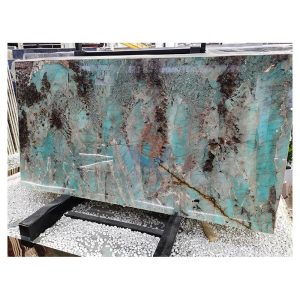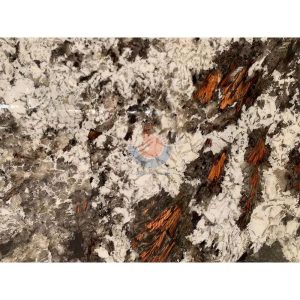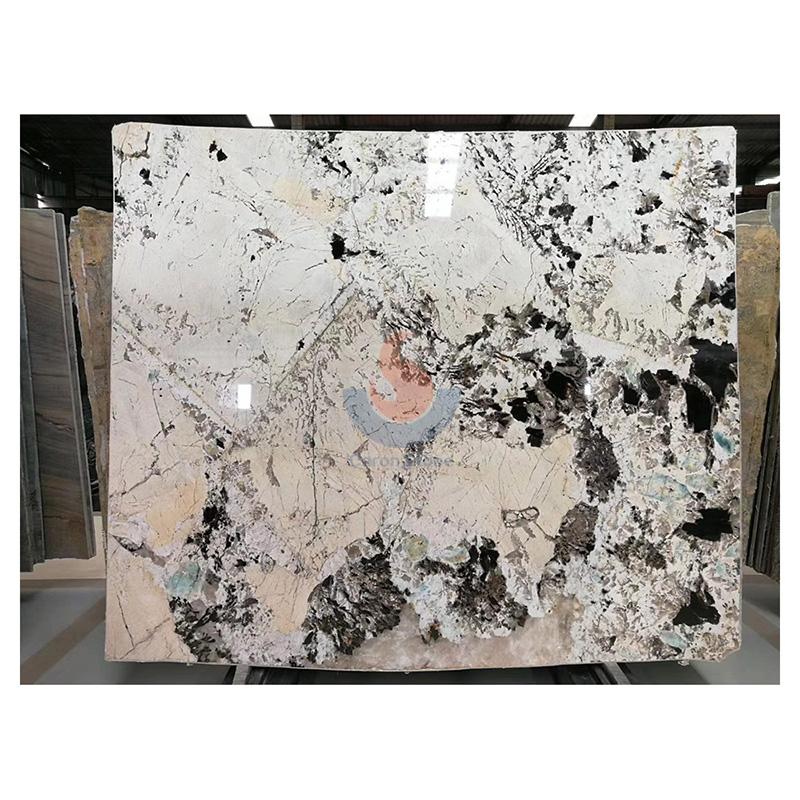When it comes to kitchen or bathroom countertops, granite countertops always stand out. Granite counters give consumers a luxurious and useful option whether their natural stone pattern or great durability counts. However, the price of granite countertops is an important factor to pay attention to. For those who are renovating for the first time or upgrading existing countertops, it is crucial to understand the price range and factors that affect granite countertops. From material costs, processing technologies to transportation and installation, to provide you a complete knowledge of the price mystery behind this classic option, this article will delve deeply into the price of granite worktops.

Green Quartzite Brazil Luxury natural stone Amazonita Green Granite
The basic composition of granite countertop prices
First of all, the price of granite countertops is not determined by a single factor, but by a combination of factors. Granite, being a natural stone, its price initially relies on its quality and availability. The price of high-end granite will inevitably be higher the more distinctive its pattern and color are. Common granite varieties, such as “Ubatuba” or “Tan Brown”, are relatively affordable because of their relatively abundant supply, while those rare granite varieties such as “Blue Bahia” or “Van Gogh” are often much more expensive because of their unique colors and textures.
Effect of processing technology on price
After granite is cut from the mine, it needs to undergo a series of processing to become a smooth and beautiful countertop. These stages of processing call for cutting, polishing, edge processing, etc. Granite countertops’ pricing is much influenced by processing technology since every stage of processing calls for high degrees of technology and specialized tools. For example, simple straight edge processing is usually cheaper, while if you choose a complex edge design, such as a bullnose edge or a European edge, the price will increase significantly. Furthermore influencing the price will be the degree of polishing of the granite surface. Generally speaking, polished surfaces cost more than matte or leather surfaces as the former call for more time and higher processing requirements.
Transportation and installation costs
Granite countertops’ weight and volume suggest that installation and shipment are equally crucial components of the cost structure. Granite is a very heavy stone, and a standard-sized countertop usually requires the cooperation of several people to carry and install, which leads to increased transportation and installation costs. The cost increases with increasing length of travel and complexity of the path taken for transportation. Similarly, some other needs during the installation process, like the necessity to cut particular sizes and perform additional installation changes on site, will also raise the installation expenses.
Geographic location and market demand
Granite countertops’ pricing will also depend on the geographic location and market demand in various areas. In large cities, due to fierce competition, the price of granite countertops may be slightly lower than that in small towns or rural areas. In addition, fluctuations in local market demand will also affect prices. For instance, granite countertops might get more expensive during the peak decorating season, but off-season discounts could exist. Thus, knowing the supply and demand relationship in the local market will enable consumers to better appreciate the timing of purchases.
The impact of customized demand on prices
In addition to basic granite countertops, customized demand will also have an impact on prices. For instance, these extra tailored services will greatly raise the overall cost if you need a specific size countertop or want holes in the countertop for installation of a sink or stove. Furthermore, some customers could like to include other elements like glass or metal into the granite countertop, therefore raising the cost. Therefore, when considering granite countertops, it is best to plan all customization needs in advance and confirm the final price with the supplier.
Price differences between different granite varieties
Different granite varieties not only differ in color and texture, but also in price. More common granite kinds, such “Giallo Ornamental” or “Santa Cecilia,” which run from $40 to $60 per square foot, typically have consistent pricing. Rare granites such as “Blue Pearl” or “Imperial Gold” can cost up to $200 or more per square foot. Furthermore, because of things like customs and transportation fees, some imported granites are often more costly than locally grown kinds.
Cost-effectiveness of granite countertops
Although granite countertops are expensive, their long service life and low maintenance costs make them very cost-effective. Granite counters are more scratch-resistant, heat-resistant, and not easily stained than other materials, such imitation stone or wood counters. Granite countertops are clearly a very affordable option over time, even if their initial outlay is significant. Furthermore improving the value of the house are granite’s inherent beauty and distinctive texture.

Swiss Alps Granite Slabs, Brazil White Granite
Granite countertops have won the favor of many families with their unique beauty and excellent performance. Granite countertops’ pricing varies depending on several factors, hence by knowing these affecting elements, customers can make better decisions. From a practical and reasonably priced point of view as well as from an aesthetic one, granite counters are a decorative item worth considering. Through proper planning and selection, you can not only have a beautiful and durable countertop, but also add a lasting value to your home.





